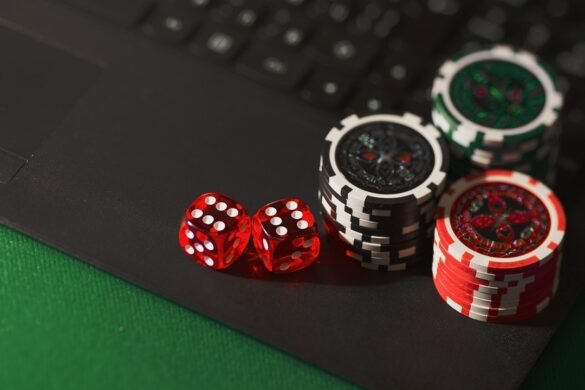Paper bag crafts can turn regular household items into impressive decorations at almost no cost. These creative projects are a great way to reuse everyday materials that would otherwise end up in the trash.
Brown paper bag craft ideas work surprisingly well and last long. Your Fall decorations can actually stay beautiful for years. Paper bag crafts suit everyone – from kids’ projects to Halloween decorations and Christmas ornaments. You can recycle paper grocery sacks, brown paper lunch bags, and even Amazon packaging materials to make something beautiful.
We’ll show you seven easy and impressive paper bag craft projects that won’t break the bank. You’ll find ways to create seasonal decorations and everyday household items with simple techniques and affordable materials. These projects prove that creativity doesn’t need much investment, whether you want to make Thanksgiving turkey crafts or set up kindergarten art activities.

Paper Bag Leaf Garland for Fall Decor
A paper bag leaf garland stands out as one of the most budget-friendly crafts you can make. This decoration brings natural autumn vibes into your home at almost no cost – you just need some grocery sacks and simple craft supplies.
Materials needed and prep
The right materials will give a smooth start to your project. You’ll need:
- 8-10 paper grocery bags or brown paper lunch bags
- Hot glue gun and glue sticks
- Branches from your yard or heavy cord/twine
- Acrylic paints (optional but recommended)
- Scissors
- Pencil
- Leaf templates (optional)
Brown paper lunch bags make great materials because they offer a clean canvas without logos or printing that need covering. Regular grocery bags work just as well if you pick areas without text.
Start by cutting your paper bags open along the seams to create flat sheets. The quickest way is to cut up one side seam, then around the bag’s bottom and back to the seam. This helps the seam blend in instead of showing up in the middle of your sheet. Many crafters suggest crinkling the paper and smoothing it out again after flattening – this step adds texture that makes leaves look more realisti.
How to cut and paint the leaves
Templates help create consistent leaf shapes. You can trace real leaves, look online for leaf outlines, or draw leaf shapes freehand on the flattened paper bags. Using three different leaf sizes adds visual interest to your finished garland.
Large shapes should be cut first, then smaller leaves from the remaining scraps. Everything gets used this way. Each standard paper lunch bag can make about five medium-sized leaves. The leaves don’t need to match – slight differences actually look more natural.
Paint transforms plain brown paper into realistic foliage. Here’s how to create the most authentic look:
- Mix acrylic craft paints in autumn colors (yellow, orange, green, red, brown, and metallics like copper and gold) with water
- Paint broad strokes across the paper leaves
- Let them dry (a blow dryer speeds things up)
- Add dimension with light touches of metallic gold or copper paint
- Spritz diluted brown paint with a toothbrush to create speckles that look natural
Wet paper curls naturally as it dries, creating that authentic dried leaf look. You can skip painting if you’re short on time, though the leaves won’t look quite as realistic.
Tips for assembling the garland
You can put together your paper bag leaf garland in several ways. The simplest method attaches leaves directly to a branch:
- Fold each leaf slightly down the middle
- Put a strip of hot glue in the center
- Press onto the branch until secure
You might create a fuller garland by using an existing magnolia or eucalyptus garland as your base, then adding paper leaves throughout. This creates a professional-looking decoration. Jute twine works well too – just add a small drop of hot glue to each leaf’s bottom edge and attach it.
Layer multiple leaves to add depth. Start with one leaf glued to your base, then add more on top in different sizes and colors. This creates a rich, layered look.
Your finished paper bag leaf garland works beautifully as fall decor. It looks great on mantels, doorways, stair railings, or windows. This handmade version costs almost nothing yet looks amazingly real.
The beauty of paper bag crafts like this leaf garland lies in their resourcefulness. Turning everyday grocery bags into beautiful decorations shows that creativity needs ingenuity more than expensive materials.
DIY Paper Bag Witch Boots for Halloween
Paper lunch sacks can become spooky witch boots that show how crafters on a budget can create memorable Halloween decorations cheaply. This Halloween craft proves you don’t need expensive materials to make impressive decorations – just some creativity and simple supplies.
Why this is a fun Halloween paper bag craft
These paper bag witch boots are a great way to upcycle and prevent waste. Most homes have paper bags tucked away somewhere, which makes this project practically free while giving professional-looking results.
The boots are versatile decorations – you can design them with a vintage primitive look or make them more colorful based on what you like. Unlike store-bought decorations that get stored after the season, you can recycle these handmade boots, making them eco-friendly.
Paper bag crafts at Halloween time can help reduce stress and anxiety. The focused work of cutting, painting, and putting pieces together gives you a mindful way to express yourself. The crafting process helps your mental well-being while creating decorations.
Parents looking for Halloween projects will find these witch boots perfect since kids need minimal supervision once they finish the cutting part. Teachers love paper bag crafts because they’re cheap and let children use their creativity.
Step-by-step instructions
You’ll need these supplies to make your witch boots:
- Paper lunch sacks (standard brown bags)
- Printable boot template (can be found online)
- Hot glue gun and glue sticks
- Polyester fiberfill (small amount)
- Scissors and pencil
- Black paint (chalk paint works well)
- Foam craft brush
- Ground cinnamon
- Decorative trims or ribbons (optional)
Here’s how to put your witch boots together:
- Cut out the boot shapes – Print and cut out a witch boot template, then trace it onto a paper bag and cut out. You’ll need four boot pieces total for a pair.
- Add stuffing – Put a small amount of polyester fiberfill on one boot piece from each pair, then secure with hot glue.
- Attach hanging elements – You can glue ribbon “stockings” to the top of each boot if you want them to hang. Striped ribbon looks like socks peeking out.
- Secure the second boot piece – Hot glue the second boot piece on top carefully, working in small sections. Trim any stuffing that sticks out.
- Paint the boots black – Use a foam brush to paint one side of the witch boot. Paint with a pouncing motion to reach all crevices.
- Allow to dry – Let the paint dry fully before handling or adding more details.
- Repeat for second boot – Create a matching boot the same way for a complete pair.
The boots make great centerpieces when attached to sticks and placed in a flower pot as “witches legs” Halloween table decorations. You can display these versatile decorations throughout your home in many ways.
Adding scent with cinnamon
Cinnamon makes these witch boots special compared to regular paper decorations. This method creates a vintage, primitive look and adds a lovely seasonal smell to your home.
Here’s how to add cinnamon to your witch boots:
- Sprinkle ground cinnamon over the surface while the black paint stays wet.
- Use a heat gun or hair dryer to dry faster, but be careful not to burn the paper.
- Brush off extra cinnamon gently with your finger or soft brush once it’s dry, and work it slightly into the paint for a better blend.
The cinnamon creates speckles that look aged and fills your decoration with warm, cozy scents that remind you of fall baking. You can add a few drops of cinnamon essential oil when the smell fades.
This scenting technique works great on other paper bag crafts for everyone. The cinnamon-scenting method fits perfectly with other Halloween items like bats, pumpkins, and haunted houses.
This craft shows how to create maximum value from minimal investment – turning simple lunch bags into charming seasonal decorations that look and smell amazing.

Rustic Paper Bag Sunflowers from Book Pages
Paper bag sunflowers are a great way to create free decorations that look amazing. This craft shows how everyday items can turn into something special without spending money.
Combining paper bags and recycled books
The project brings together two items you probably have at home – brown paper bags and old book pages. Crafters love this chance to turn trash into something beautiful, and it keeps these materials out of landfills.
The mix of grocery sacks and book pages creates a unique look that store-bought decorations just can’t match. These materials work perfectly together – brown paper makes strong stems and centers, while book pages create soft, textured petals.
You’ll need these items to get started:
- Book pages from thrifted or damaged books
- Brown paper grocery bags
- Cardboard pieces (cereal boxes work well)
- Hot glue and glue gun
- Scissors
The technique is a lot like making paper bag snowflakes and poinsettias, which means you can use it for different seasons. Once you learn the simple method, you’ll find endless ways to get creative with these basic materials.
Creating the sunflower shape
The sunflower comes together in two main parts – the center and petals. Here’s how to make the center:
- Cut cardboard into strips about one inch wide
- Roll these strips into tight coils and secure them with hot glue
- Keep adding strips until you reach at least 4 inches across
Next comes the stem. Put a little petroleum jelly or cooking oil on your hands and crumple up some paper bag material. This step gives the stem a realistic texture. Work the paper for a few minutes, then twist it firmly. Leave one end slightly wider to hold your flower head.
The petals need some prep work. Here’s a quick way to make them:
- Take several pages from a book
- Fold and cut each page into quarters
- Use about 14 pieces for each sunflower
- Pinch one end of each piece
- Crumple the whole piece for texture
- Glue them to the cardboard center
Glue your petals around the center’s edge, letting them overlap slightly. A light spray of coffee or acrylic paint adds depth and makes them look more real.
Ideas for display
These paper sunflowers look great on their own or as part of a bigger display. They fit perfectly in wicker baskets or painted fishing creel baskets for that country feel.
Their neutral look works really well with fall decorating. You can mix them with gourds, leaves, and textured fabrics. Just like professional arrangements, putting several sunflowers at different heights catches the eye.
Here are some fun ways to show off your paper bag crafts:
- Put them in vintage glass bottles or mason jars
- Group several together for a centerpiece
- Add them to wreaths or garlands
- Mix them with other fall-themed paper bag crafts
These sunflowers last much longer than real ones. They cost almost nothing to make and can last for years if you keep them away from moisture and direct sunlight. That’s a pretty good return on your crafting time.
These rustic paper sunflowers add a beautiful touch to neutral fall décor. They bring warmth to any space and prove that you don’t need to spend much to create something special.
Brown Kraft Paper Table Runner for Thanksgiving
A pleated kraft paper table runner ranks among the most stylish yet affordable Thanksgiving decorations. This remarkable paper bag craft reshapes ordinary brown paper into an elegant table accent that your guests will love.
How to pleat and decorate the runner
Your table’s length plus desired overhang determines how much paper you need. Simply roll kraft paper across the surface and leave a few inches of overhang on each end. A 30-inch width works great for most tables, though you can use narrower 18-inch rolls just as effectively.
Here’s how to make those eye-catching pleats:
- Cut paper strips about three times your paper roll’s width
- Add texture by gently crumpling strips, then flatten them with your hands
- Apply a “knife fold” technique with a 2:1 ratio – 1-inch pleats with 2-inch folds between
- Make small guide marks at 1-inch and 2-inch intervals for consistent pleats
- Create an alternating pattern by pinching at marks and folding up, then down at next marks
- Secure your pleats with a straight line of stitching about 1 inch from the edge
Decoration possibilities are endless with this versatile craft. Many families ask guests to write their gratitude directly on the paper. This meaningful activity doubles as pre-meal entertainment. Kids love adding their own drawings and doodles.
You could try these structured design ideas:
- Write guest names at place settings with black Sharpies or metallic markers
- Create floral or seasonal patterns using acrylic paint stamps
- Add vinyl stickers or hand-lettered positive messages
This paper bag craft’s charm lies in its cost-effectiveness. Most homes already have kraft paper and markers, which makes this decoration practically free. The interactive element creates lasting memories that are worth more than any store-bought decorations.
Here are some FAQs about paper bag crafts:
What can I make with a paper bag?
You can make a wide variety of creative projects with a paper bag, such as homemade gift bags, puppets, and decorative lanterns. Seasonal paper bag crafts are especially popular, including paper bag halloween crafts like treat bags and spooky masks or paper bag christmas crafts for ornaments and stockings. Simple brown paper bag crafts can be transformed into rustic wrapping or custom art journals.
How do you do the paper bag trick?
The classic paper bag trick, often used as a prank, involves secretly placing a small paper bag on the floor and filling it with air by stomping on it to create a loud pop. The setup involves carefully placing the bag so the unsuspecting person steps on it. This is different from the creative, hands-on process of making paper bag crafts for kids.
How to make a paper bag easy step by step?
To make a simple paper bag, start by folding a rectangle of craft paper in half and gluing the side seam to form a tube. Then, fold and glue the bottom shut by creating crisp pleats at the base for stability. Finally, fold down the top to create a cuff, and you have a basic bag ready for decorating as part of your paper bag crafts.
What is a craft paper bag?
A craft paper bag is typically a plain brown or colored bag made of sturdy paper, designed specifically for DIY projects and creative reuse. It serves as a blank canvas for decorations, painting, and cutting to create various paper bag crafts for kids and adults. These bags are a staple material for seasonal projects like paper bag halloween crafts.
How to repurpose a paper bag?
You can repurpose a paper bag in many creative ways, such as using it as eco-friendly wrapping paper, cutting it up for scrapbooking backgrounds, or making custom book covers. For a festive twist, you can turn them into seasonal decorations as part of your paper bag christmas crafts. Simple brown paper bag crafts also include making plant pots or storage containers.
What is the hottest craft right now?
Some of the hottest crafts currently include resin art, punch needle embroidery, and making personalized tumblers. Seasonal crafts always trend, so with holidays approaching, projects like paper bag halloween crafts and paper bag christmas crafts see a surge in popularity. Upcycling materials for brown paper bag crafts also remains a consistently popular and sustainable trend.
How to make a paper bag pop?
To make a paper bag pop, you can decorate it with vibrant paints, stickers, ribbons, or patterned paper to give it a bold, three-dimensional look. For a dramatic effect in crafts, you can stuff it with tissue paper or other bags to create a fuller shape, perfect for display. This technique is often used in eye-catching paper bag crafts for kids and festive decorations.



